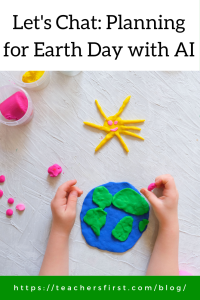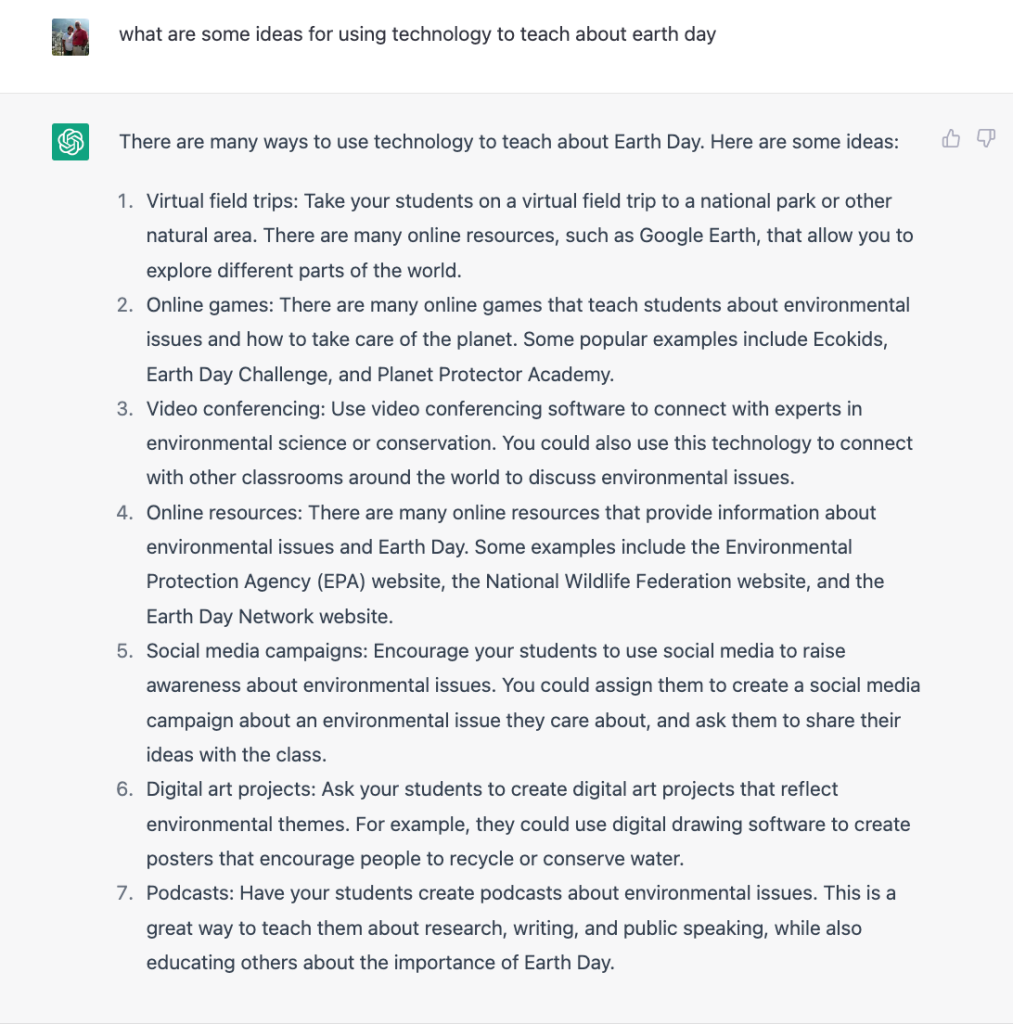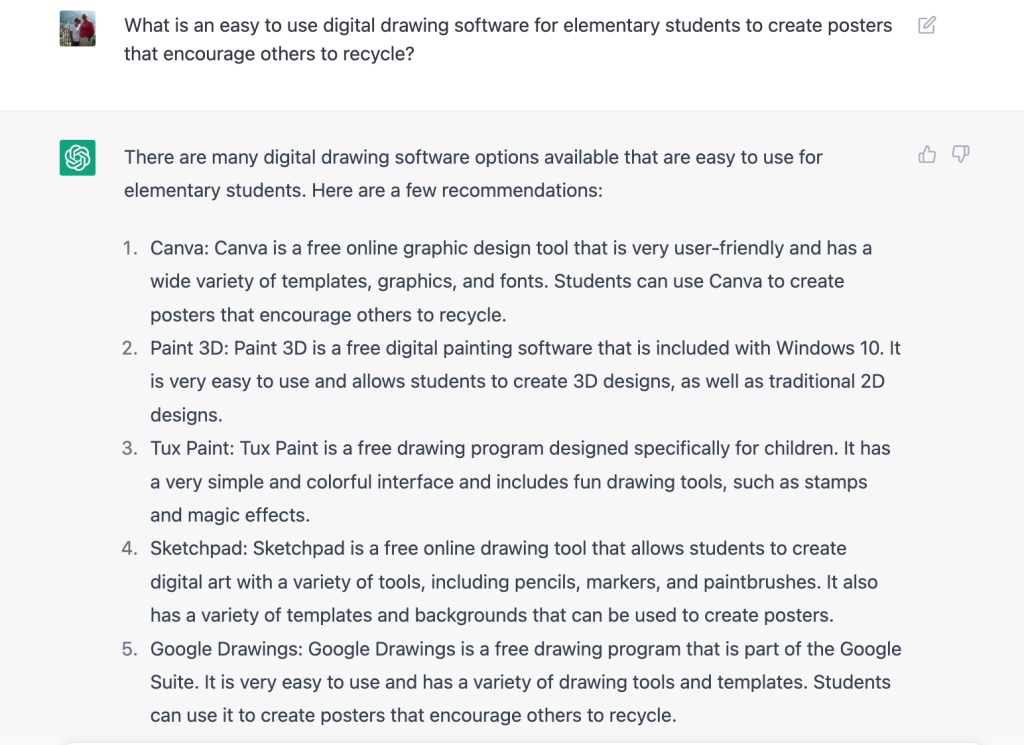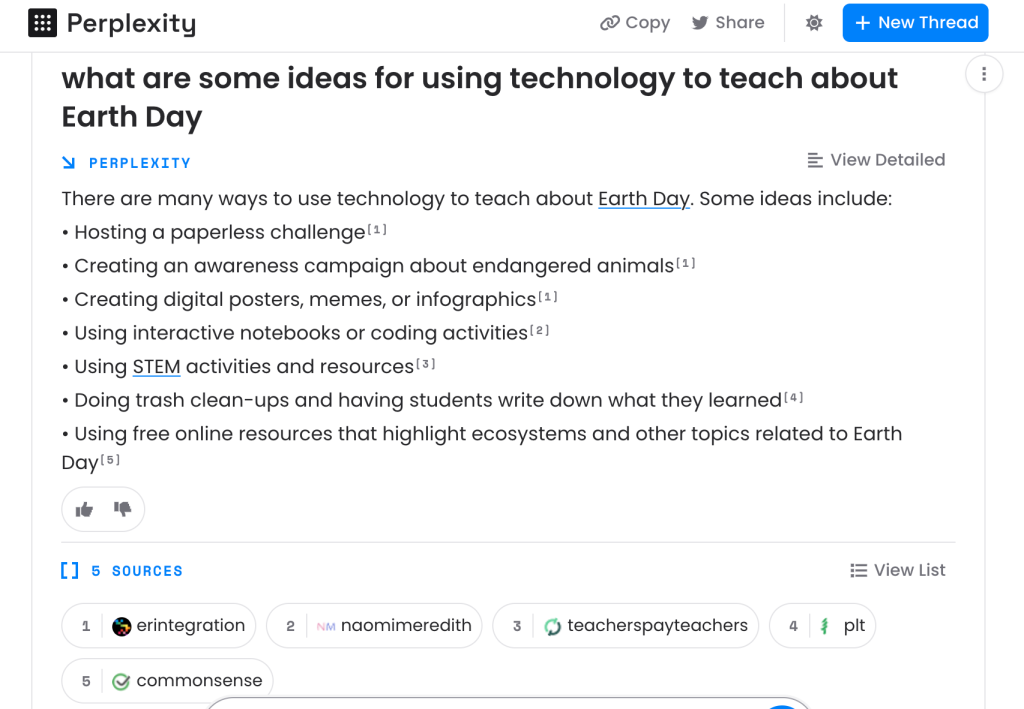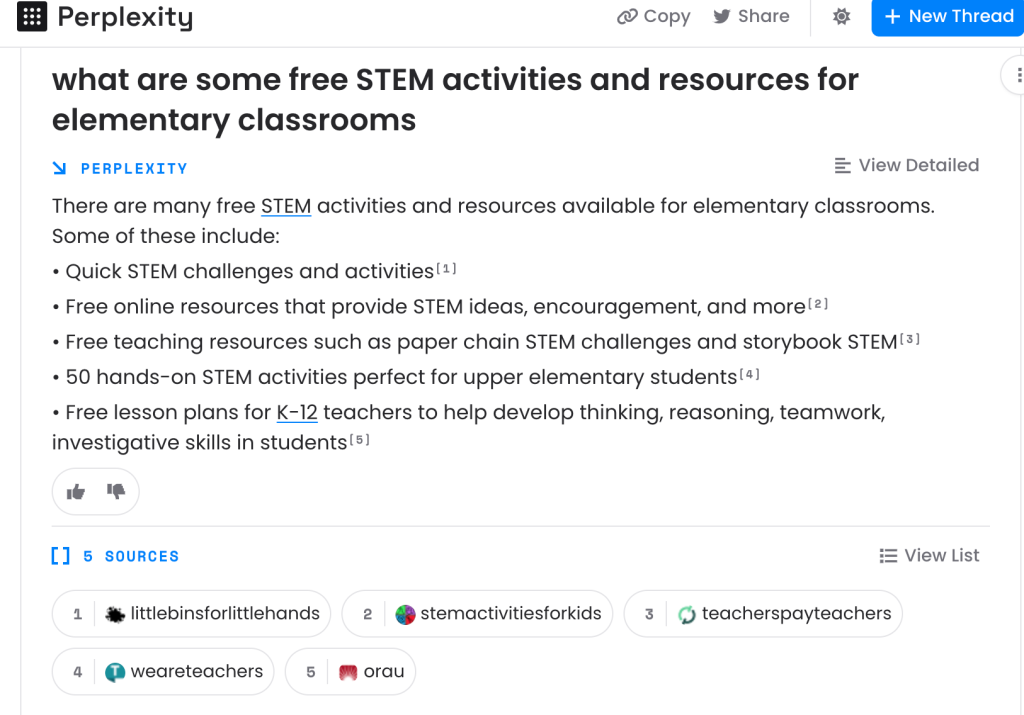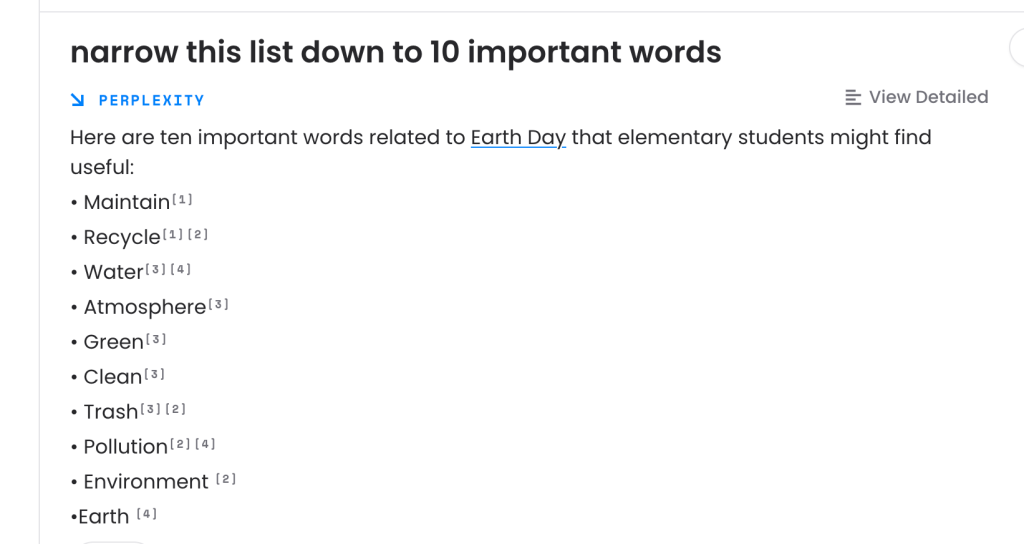The first Earth Day celebration took place on April 22, 1970. Senator Gaylord Nelson promoted the concept of Earth Day to encourage students to fight for environmental causes with the same kind of energy they used to fight the Vietnam War. Earth Day activities and events have seen over one billion people in one hundred ninety countries provide support for increased environmental awareness.
Classrooms around the world also participate in Earth Day activities in many ways. For example, some students create posters, plant trees, and write poems. Others integrate earth science lessons with reading assignments, art activities, and experiments.
As you consider how to celebrate Earth Day in your classroom, many new tools are available to make planning and lesson preparation easier for teachers using Artificial Intelligence (AI). Although AI tools are all around us, we don’t always see them; however, new tools are making it easier to take advantage of these resources for classroom use.
The use of AI resources by students is still controversial and has been banned by some schools until the proper use of the technology is determined. Questions raised include the appropriate way to attribute the material provided through AI, the bias and discrimination inherent in AI tools, lack of human interaction when giving feedback, cost, and more.
Getting Started with AI
Why do I need to know more about AI tools? First, we know that students are using AI, and we need to be familiar with how they use it to complete assignments. Second, from a professional productivity standpoint, it is a practical tool that can assist educators with everyday tasks and improve efficiency.
How do I learn about AI tools? Almost everywhere you look on social media, educators discuss AI tools such as ChatGPT. This Wakelet collection shares some basic information and ideas on using AI in and out of the classroom.
How do I begin? Start learning about AI tools by taking small steps to understand what they are and how they work. Next, consider using AI resources to help plan lessons, preferably on familiar topics and objectives. Using everyday materials allows you to analyze the information produced by the artificial intelligence product to determine if it is valid for your curriculum objectives.
AI Tools to Support Earth Day Activities
As educators, artificial intelligence tools are helpful as time-savers and as a resource for finding new ideas to engage students in learning. With that in mind, let’s consider using AI tools to plan Earth Day activities incorporating technology.
- ChatGPT – ChatGPT is the most talked about AI tool. It is simple to use by typing a question or request in the chat bar. However, due to the popularity of ChatGPT, sometimes the servers are busy. Creating an account helps reduce the number of times this occurs.
- When asking for ideas to use technology to teach about Earth Day, I received this response, and it provides some excellent ideas to begin planning.
Once you find an idea you like, narrow down the information if desired. For example, response #6 suggests using digital drawing software programs to create posters, so the following question in the chat might be for suggestions on appropriate software for elementary students. ChatGPT’s response includes five free drawing tools and a summary of each tool.
- Perplexity – Perplexity works in much the same way as ChatGPT. Type in your question or request and receive a response to your question. At this time, Perplexity is more helpful in creating lists of vocabulary words or a timeline of events than guiding you toward specific lesson ideas and resources. Perplexity offers one big difference over ChatGPT: it includes the sources used to respond.
- This site didn’t offer as many specific ideas as ChatGPT to my Earth Day query, and not all are technology related; however, it does share some additional thoughts for Earth Day lessons not provided by ChatGPT. Perplexity also offers the option to ask a follow-up question, so the subsequent prompt attempts to search for specific resources that offer free STEM activities and resources. But, again, it didn’t provide the specific information to help plan an Earth Day activity in the classroom.
When asked, Perplexity shared a long list of vocabulary words related to Earth Day for elementary students. As a follow-up, when asked, that list was narrowed down to ten essential words. This provides a quick and easy starting point for introducing vocabulary terms to students about any topic or subject.
- Curipod – Curipod is a lesson creation tool that uses AI technology. Choose the link to generate lessons, and add your topic, grade level, and learning objective or standards. Curipod works magic to create a slide presentation with interactive activities such as polls, word clouds, and drawings. Then, edit the presentation to change images and adjust activities to fit your needs or choose to make a new lesson using the same prompt. The free version of Curipod includes five private Curipods to create and share lessons.
- Curipod created this 12-slide activity by typing in Earth Day for fourth grade. It includes background information about Earth Day and interactive student activities, including short responses, polls, and drawings. Students join the activity with the code and link provided at the start of the session.
- Another option within Curipod is the ability to create quick activities such as brain breaks, lesson hooks, and exit tickets. Keeping Earth Day in mind, this lesson hook asks students to think about how they can help achieve Sustainable Development Goal 7 (affordable and clean energy) in their homes or community. To create a lesson hook, type in your objective and grade level, then edit the slide as you wish.
In conclusion, AI has the potential to revolutionize the way we teach and learn in the classroom. As we have seen, AI-powered tools and platforms can help teachers personalize and facilitate instruction. As this technology continues to evolve, it will undoubtedly play an even more significant role in the classroom. While there are certainly challenges and considerations to keep in mind, the benefits of using AI in education are clear, and it’s an exciting time to be a part of this rapidly developing field.
What questions do you have about using artificial intelligence for lesson planning and other classroom duties? Do you have tips for other educators? Share your thoughts and ideas in the comments below!


